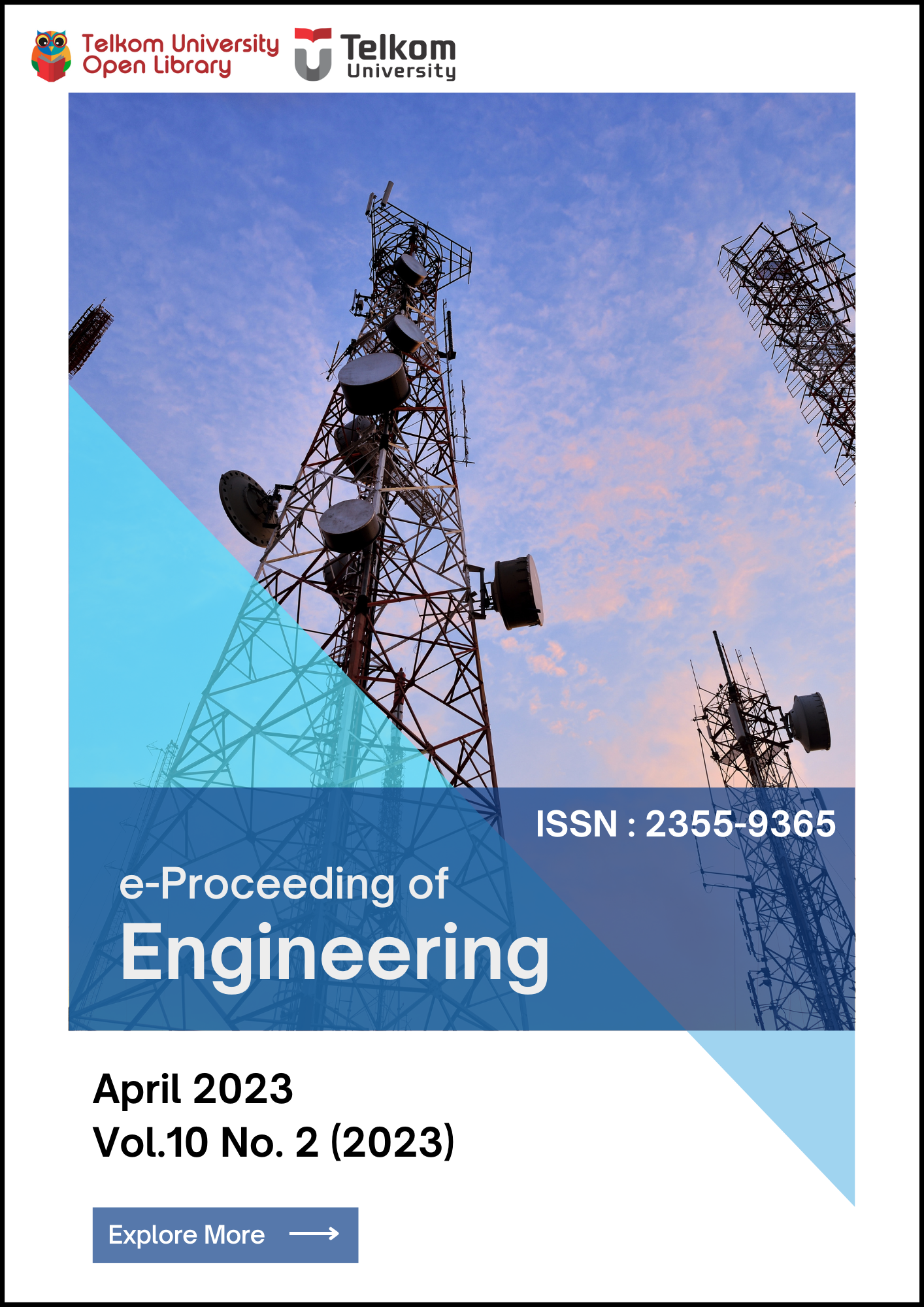Perbandingan Metode Seleksi Fitur untuk Mengoptimasi Model Support Vector Machine dalam Memprediksi Turnover Pegawai
Abstract
Abstrak-Seleksi fitur merupakan salah satu proses yang dilakukan untuk mengurangi dimensi data. Pengurangan dimensi bertujuan untuk meningkatkan performa model algoritma pembelajaran mesin. Turnover pegawai adalah suatu fenomena yang merujuk pada tingkat pegawai yang keluar dari suatu perusahaan. Penelitian mengenai implementasi algoritma pembelajaran mesin dalam memprediksi turnover pegawai sudah banyak dilakukan. Namun, performa model algoritma support vector machine (SVM) secara umum tidak menghasilkan performa yang baik. Dengan menggunakan metode seleksi fitur, hasil performa algoritma SVM diharapkan dapat menjadi lebih baik dalam memprediksi pegawai yang hendak melakukan turnover. Seleksi fitur digunakan pada dataset turnover pegawai sebelum dipelajari oleh model SVM yang dibangun. Metode seleksi fitur yang digunakan adalah filter methods, wrapper methods, dan embedded method. Penelitian ini menampilkan metode seleksi fitur mana yang paling baik dalam meningkatkan performa dari algoritma SVM. Matriks evaluasi seperti akurasi, recall, presisi, dan f1-score digunakan untuk menilai hasil akhir performan dari model SVM setelah dilakukan seleksi fitur. Hasil yang didapatkan adalah metode wrapper method meningkatkan performa dengan lebih baik dibandingkan metode lain. Nilai performa secara keseluruhan naik sebesar 4% dari performa sebelum dilakukan seleksi fitur.
Kata kunci - turnover pegawai, pembelajaran mesin, support vector machine, seleksi fitur
References
A. Karmanska, “The benefits of HR analytics,” Pr. Nauk. Uniw. Ekon. we Wroctawiu, vol. 64, no. 8, pp. 30–39, 2020, doi: 10.15611/pn.2020.8.03.
Y. Zhao, M. K. Hryniewicki, F. Cheng, B. Fu, and X. Zhu, Employee turnover prediction with machine learning: A reliable approach, vol. 869. Springer International Publishing, 2018.
V. Amin, J. A. Rathod, M. Kunder, and P. Patkar, “A review on employee attrition using machine learning,” no. 05, pp. 1237–1241, 2021.
R. Punnoose and P. Ajit, “Prediction of Employee Turnover in Organizations using Machine Learning Algorithms,” Int. J. Adv. Res. Artif. Intell., vol. 5, no. 9, pp. 22–26, 2016, doi: 10.14569/ijarai.2016.050904.
S. Garcia, J. Luengo, and F. Herrera, “Feature selection,” Intell. Syst. Ref. Libr., vol. 72, no. 6, pp. 163–193, 2015, doi: 10.1007/978-3-319-10247-4_7.
S. Ernawati, E. R. Yulia, Frieyadie, and Samudi, “Implementation of the Naïve Bayes Algorithm with Feature Selection using Genetic Algorithm for Sentiment Review Analysis of Fashion Online Companies,” 2018 6th Int. Conf. Cyber IT Serv. Manag. CITSM 2018, no. Citsm, pp. 1–5, 2019, doi: 10.1109/CITSM.2018.8674286.
J. D. Alvarez, J. A. Matias-Guiu, M. N. Cabrera-Martín, J. L. Risco-Martín, and J. L. Ayala, “An application of machine learning with feature selection to improve diagnosis and classification of neurodegenerative disorders,” BMC Bioinformatics, vol. 20, no. 1, pp. 1–12, 2019, doi: 10.1186/s12859-019-3027-7.
Q. R. S. Fitni and K. Ramli, “Implementation of ensemble learning and feature selection for performance improvements in anomaly-based intrusion detection systems,” Proc. - 2020 IEEE Int. Conf. Ind. 4.0, Artif. Intell. Commun. Technol. IAICT 2020, pp. 118–124, 2020, doi: 10.1109/IAICT50021.2020.9172014.
A. Tursunbayeva, S. Di Lauro, and C. Pagliari, “People analytics—A scoping review of conceptual boundaries and value propositions,” Int. J. Inf. Manage., vol. 43, no. July, pp. 224–247, 2018, doi: 10.1016/j.ijinfomgt.2018.08.002.
T. Peeters, J. Paauwe, and K. Van De Voorde, “People analytics effectiveness: developing a framework,” J. Organ. Eff., vol. 7, no. 2, pp. 203–219, 2020, doi: 10.1108/JOEPP-04-2020-0071.
J. H. Marler and J. W. Boudreau, “An evidence-based review of HR Analytics,” Int. J. Hum. Resour. Manag., vol. 28, no. 1, pp. 3–26, 2017, doi: 10.1080/09585192.2016.1244699.
C. Varma and C. Chavan, “A Case of HR Analytics–to Understand Effect on Employee Turnover,” J. Emerg. Technol. …, vol. 6, no. 6, pp. 781–787, 2019, [Online]. Available: https://papers.ssrn.com/sol3/papers.cfm?abstract_id=3619634.
V. S. Rangel, “A review of the literature on principal turnover,” Rev. Educ. Res., vol. 88, no. 1, pp. 87–124, Feb. 2018, doi: 10.3102/0034654317743197.
Y. Zhang, “A Review of Employee Turnover Influence Factor and Countermeasure,” J. Hum. Resour. Sustain. Stud., vol. 04, no. 02, pp. 85–91, 2016, doi: 10.4236/jhrss.2016.42010.
B. J. Ali and G. Anwar, “Employee Turnover Intention and Job Satisfaction,” Int. J. Adv. Eng. Manag. Sci., vol. 7, no. 6, pp. 22–30, 2021, doi: 10.22161/ijaems.76.3.
I. El Naqa and M. J. Murphy, “What Is Machine Learning?,” in Machine Learning in Radiation Oncology, Springer International Publishing, 2015, pp. 3–11.
R. Rai, M. K. Tiwari, D. Ivanov, and A. Dolgui, “Machine learning in manufacturing and industry 4.0 applications,” International Journal of Production Research, vol. 59, no. 16. Taylor and Francis Ltd., pp. 4773–4778, 2021, doi: 10.1080/00207543.2021.1956675.
S. Suthaharan, Machine Learning Models and Algorithms for Big Data Classification, vol. 36. Boston, MA: Springer US, 2016.
D. A. Pisner and D. M. Schnyer, “Support vector machine,” in Machine Learning: Methods and Applications to Brain Disorders, Elsevier, 2019, pp. 101–121.
R. Gholami and N. Fakhari, “Support Vector Machine: Principles, Parameters, and Applications,” in Handbook of Neural Computation, Elsevier Inc., 2017, pp. 515–535.
R. Kavitha and E. Kannan, “An Efficient Framework for Heart Disease Classification using Feature Extraction and Feature Selection Technique in Data Mining.”
G. Chandrashekar and F. Sahin, “A survey on feature selection methods,” Comput. Electr. Eng., vol. 40, no. 1, pp. 16–28, 2014, doi: 10.1016/j.compeleceng.2013.11.024.






